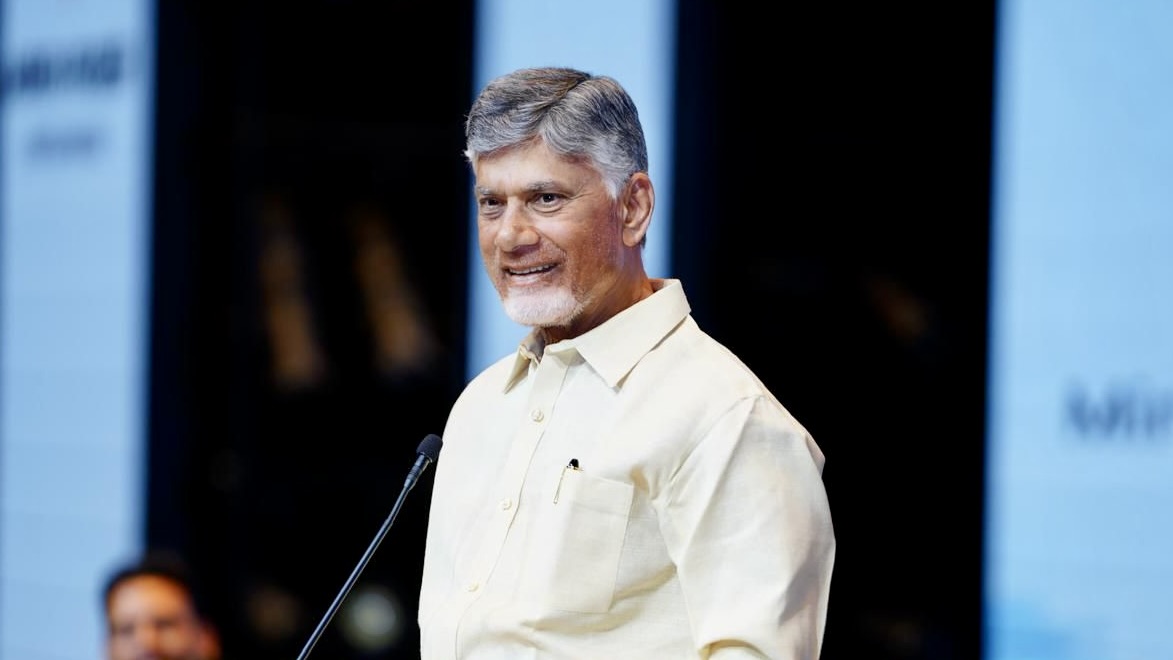The upcoming conference will revolve around eight themes, each designed to accelerate sector-specific outcomes. Naidu’s stress on structure and citizen focus reflects a calculated bid to cement the NDA’s acceptability in Andhra Pradesh.
Published Sep 14, 2025 | 4:21 PM ⚊ Updated Sep 14, 2025 | 4:21 PM

Andhra Pradesh Chief Minister N Chandrababu Naidu
Synopsis: At the upcoming two-day collectors’ conference beginning Monday, 15 September, Andhra Pradesh Chief Minister N. Chandrababu Naidu is expected to push for speed and accountability in governance, with a focus on prompt delivery of the ruling coalition’s welfare schemes and quick response to citizens’ needs. Naidu wants to contrast his governance model with that of the previous YSRCP regime while steering the debt-ridden state towards ambitious growth and higher per capita income targets.
Andhra Pradesh Chief Minister N Chandrababu Naidu is set to push for speed in governance at the two-day collectors’ conference beginning Monday, September 15.
At a preparatory meeting with senior officials at his Undavalli residence in Amaravati on Saturday, Naidu called for swift delivery of welfare schemes and quick response to people’s needs.
The Chief Minister believes this is how the National Democratic Alliance (NDA) coalition, led by the Telugu Desam Party (TDP), can consolidate the trust of voters that gave it a decisive victory in the 2024 general elections.
The upcoming conference will revolve around eight themes, each designed to accelerate sector-specific outcomes. Naidu’s stress on structure and citizen focus reflects a calculated bid to cement the NDA’s acceptability in Andhra Pradesh.
It remains to be seen how the reforms that Naidu is contemplating will lift the state from a debt burden of about ₹10 lakh crore and put it on the path of growth.
The first day of the conference will focus on boosting the state’s Gross State Domestic Product. Sessions will cover services, industries, agriculture, and tourism.
Collectors will brief the Chief Minister on welfare schemes such as the Super Six, Anna Canteens, and the P4 initiative. Logistics, infrastructure, Swachh Andhra, circular economy, and strengthening of panchayat raj and municipal administration will also be taken up.
The second day will move to human resources development, healthcare, and skill building. The focus will then shift to IT initiatives like Quantum Valley, WhatsApp services, Data Lake, and AI applications. Law and order will be discussed in detail before the conference closes.
Naidu is keen to contrast his governance model with what he calls the “misgovernance” of the previous Yuvajana Sramika Rythu Congress Party (YSRCP) regime.
The TDP chief has accused the YSRCP of presiding over stagnation and lost economic opportunities. By placing citizen satisfaction at the centre of his strategy, Naidu wants his government to stand apart.
He pointed to the state’s quick response in rescuing stranded Indians from Nepal as proof of this approach. “Fixing flights to bring them home earned goodwill,” he said, stressing that administration should always be at the forefront in times of crisis.
Naidu also proposed an upskilling centre at the CRDA building in Amaravati. The idea is to train officers at all levels to improve service delivery and efficiency.
“The real success of governance is measured by the satisfaction people derive from the services they receive,” he told officials. The model, the Chief Minister said, must be public-centric, with faster feedback loops to fine-tune policies.
Naidu recalled that Andhra Pradesh logged 10.5 percent growth in the first quarter of the current fiscal. But his government is aiming higher. The state wants its GSDP to touch ₹29 lakh crore by 2029 and per capita income to rise to ₹10.55 lakh by 2034.
To achieve this, Naidu is relying on frequent, structured reviews. Since the NDA assumed office, 25 cabinet meetings have been held, with a five-year goal of 125. Similarly, 25 collectors’ conferences—one each quarter—are planned to enforce accountability at the grassroots.
Naidu has also reshuffled collectors and SPs, linking transfers to performance. He says this ensures “the right person in the right place” and reduces bureaucratic inertia.
(Edited by Dese Gowda)
